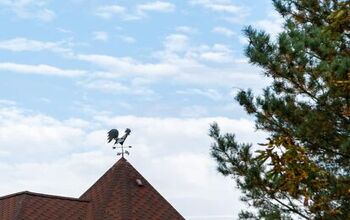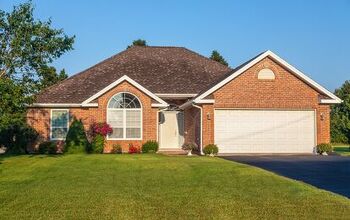How Much Wind Can A Mobile Home Withstand?

When I was growing up, I didn’t know much about mobile homes aside from the fact that they were supposedly bad with tornados. But then again, not many homes are good with tornado wind speeds. While mobile homes are not exactly lauded for their wind hardiness, there has to be some point that they are built to withstand wind, right? What’s the limit?
The bare minimum that a mobile home is expected to withstand is winds up to 70 miles per hour. In wind-prone zones, a mobile home must be built to withstand up to 100 miles per hour or 110 miles per hour, depending on the official government designation.
While high winds can still be extremely damaging for most home styles, it’s good to know that most mobile homes still have some degree of resistance built into them. Sure, it might not be much, but it still will be able to give homeowners some peace of mind. Figuring out your details, though, can be a bit much.
Do You Need Storm and Hurricane Recovery Services?
Get free, zero-commitment quotes from pro contractors near you.

How Is A Mobile Home’s Minimum Wind Resistance Determined?
Like with most other things dealing with home builds, there are legal housing guidelines that set minimums when it comes to wind resistance for mobile homes. Having a mobile home that doesn’t meet these guidelines is considered to be hazardous to the wellbeing of people who live inside and the community. That means that most mobile homes have to be up to building codes that are upheld across states.
If you live in a high wind zone, your federal regulations are going to be different—and that means that your mobile home might need extra reinforcement.
How Do Wind Zones Play Into Regulations?
For almost every part of the country, there’s a minimum wind resistance of 70 miles per hour. This is for Wind Zone I, which is “normal” wind areas. However, the minimum wind resistance in areas that are known for hurricanes and tornados changes.
- Wind Zone II homes need to withstand a minimum of 100 miles per hour.
- Mobile homes in Wind Zone III need to withstand up to 110 miles per hour.
- If you have a mobile home built before 1976, your area might allow you to “grandfather” the home in regardless of wind resistance.
What Happens If Winds Exceed The Speed Your Mobile Home Is Built For?
If your mobile home gets caught in a storm that has winds that are ultra-high-speed, it’s expected that your home will incur some form of damage. How much damage your mobile home gets will depend on the wind speeds, what’s around your home, as well as your own luck. If you’re lucky, you might have minor damage. If you’re unlucky, your mobile home will be gone with the wind.
Can My Mobile Home Get Damaged Even If Winds Are Below The HUD Threshold?
Though mobile homes are tested at length, there’s no way to guarantee that your home will always be safe from high winds and other storm-related damage. If your home is in disrepair or if an errant tree branch flies into your home the wrong way, you can still end up with some damage as a result of your storms.
The idea behind the HUD certification is to hold mobile homes up to a standard that will minimize the risk of damage happening. It’s a workmanship thing, just as much as it is a safety thing. It’s an idea that is about preventing damage and making sure that your home is built for the type of weather that is found in your area.
How To Find Out What Wind Zone Your Mobile Home Is Made For
For the most part, mobile homes that are stuck in a certain area are going to have wind ratings for that area. However, that’s not always the case. It’s good to know the maximum wind zone that your home can handle, if only for insurance purposes. To do this, you should take a look at your HUD data plate.
What Is A HUD Data Plate?
A HUD data plate is a plate that is created by the Housing and Urban Development board that details the important parts of your mobile home’s codes. It’ll include its size, construction details, as well as information on the maximum wind speed that your home is built to withstand.
Where Is My HUD Data Plate?
Your HUD data plate is usually found inside, nailed (or bolted) onto the interior of your kitchen cabinet, electrical panel, or bedroom closet. From there, you should be able to get important details about your mobile home’s safety ratings.
If you can’t find the plate there, you can also try your HUD certificate, which is found on the exterior of your mobile home, near the bottom of your building. If you see a serial number on the plate’s tag, then you should be able to look up the number online to find out your approved wind zones.
Can I Upgrade My Mobile Home’s Wind Resistance?
If only life would be so easy, right? Unfortunately, once your mobile home has been manufactured, you cannot make it into a higher zone rating. Theoretically, you could be able to improve your home’s wind resistance using upgrades and add-ons, but bureaucratically speaking, it’s a done deal.
People who are looking into a mobile home in their future should consider getting a home that’s rated higher than what is minimal in your area. Not only will this come in handy during extreme weather, but it can also make it easier to move your home to a new lot if you so choose. After all, it is possible to move a mobile home.
Why Can’t My HUD Rating Get Upgraded?
This all has to do with the way HUD standards work. The current HUD mobile home code covers a wide range of different factors, all of which have been tested by scientists to ensure that it will be able to withstand the winds that it’s supposed to. Some of the more important factors include:
- Shear walls
- Diaphragms
- Wall studs
- Exterior sheathing
Some of these elements cannot be changed in a mobile home without posing a serious risk to the overall structure of the home. During a HUD upgrade, virtually every aspect of the home would have to be changed. By just banning the paperwork upgrade altogether, HUD ensured that people won’t potentially turn their mobile homes unstable.
Are Mobile Homes More Dangerous Than Site-Built Homes During Storms?
We won’t mince words. When it comes to the ability to withstand high winds, site-built homes are the clear winners. This is partly because of the foundational differences (anchoring, for example) between the two homes as well as the materials that the homes are made of. Mobile homes also are lighter in weight than the two, which can pose a wind risk.
If you are seriously concerned about the safety of your home due to climate change or other concerns, then you should be very careful when it comes to living in a mobile home. If you insist on living in a mobile home, choose a location that is not prone to tornados or hurricanes. Otherwise, it may be better to save up extra for a regular home with a more solid foundation.
Do You Need Storm and Hurricane Recovery Services?
Get free, zero-commitment quotes from pro contractors near you.

Related Questions
Are mobile homes more vulnerable to fire than regular homes?
While this once was the most common statement mentioned about fire safety, major improvements have been made to mobile home designs over the years. The majority of mobile homes now have a more advanced fire safety setup that is designed with the specific needs of mobile homes in mind.Studies show that site-built homes in the Midwest have a higher fire incidence rate than mobile homes in the same regions. So, it seems like the measures that have been taken to improve home quality have succeeded with flying colors.
Do mobile homes lose value?
This depends on a wide range of factors. Mobile homes, in general, have a higher chance of losing value compared to other housing types. If you don’t own the land on your mobile home, have a mobile home in disrepair, and are in a high-crime area, you will most likely lose value on your home.Careful maintenance, owning the land the home is on, and having a high-end mobile home can help you make the most of your house value. With that said, most people agree that site-built homes are a better investment in terms of house quality.
What should you do if there’s a tornado near your mobile home?
Do not hide underneath your mobile home or stay inside your home, as the tornado can pick up the home and drop you from a tall height. Instead of going with your first instinct, head to the closest tornado shelter. Most mobile home parks in tornado-prone areas have one large enough to fit everyone. If you do not have a shelter, stay away from the tornado and try to find a safe place elsewhere.
Related Guides

Ossiana Tepfenhart is an expert writer, focusing on interior design and general home tips. Writing is her life, and it's what she does best. Her interests include art and real estate investments.
More by Ossiana Tepfenhart












![How Much Weight Can a 4×4 Support Horizontally? [It Depends!]](https://cdn-fastly.upgradedhome.com/media/2023/07/31/9070333/how-much-weight-can-a-44-support-horizontally-it-depends.jpg?size=350x220)














